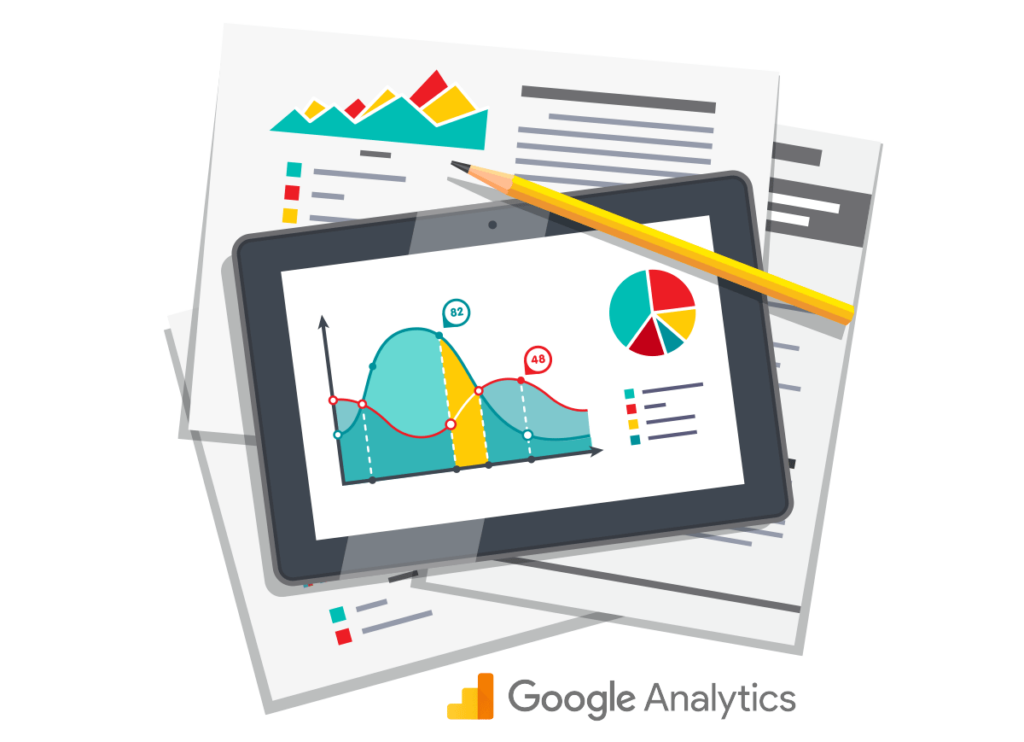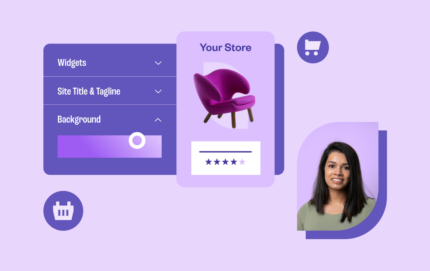Your online shop is up and running and your marketing campaigns are all set to drive traffic to your store. Don’t forget to set up your store to track online customer behaviour!
This is a common mistake website owners make, overlooking the wealth of information that is provided by monitoring and measuring how their visitors behave. When you understand what your visitors experience once they’ve reached your online store, you’re able to optimise your marketing campaigns, web content, and shopping cart.
Once you understand the buyer decision-making process, tracking online behaviour needn’t be complicated nor expensive when using Google Analytics.
The 4 steps in the buyer decision-making process:
To understand the value of tracking and analysing your web traffic, consider a potential buyer’s decision-making behaviour in the lead-up to the sale and after the purchase.
1. They first identify a want or need.
This want or need could be triggered in various ways, for example, by realising that a product needs replenishing, by a colleague or neighbour talking about a product in a favourable way, or through advertising.
2. Once they’ve identified a want or need, they seek for more information about how and where this can be satisfied.
Consumers today are spoilt for choice. They’re no longer bound by geography, devices or payment options so their buying decision-making includes various channels on different devices from different locations. For example, some shoppers may prefer the mall experience for some products and an online experience for others. The same shoppers could use a combination of online and offline channels before deciding where to buy. They could perform the information search on their desktops, smartphones or tablets before deciding if and where to buy.
3. With enough information, they’re ready to make the purchase.
Suppose six potential customers have identified a need for your product because they need to replenish, they’ve heard about it from a colleague or neighbour, or they’ve seen your Facebook ad. They’ll go ahead and purchase the option that best suits their lifestyle, preferences, or budget.
Each potential buyer could have a different purchase behaviour, for example:
- Search offline and buy offline
- Search offline and buy online
- Search online and buy offline
- Search online and buy online
- Search online and offline and buy online
- Search online and offline and buy offline
4. After the purchase, buyers are either satisfied or dissatisfied with their products and often behave accordingly.
Today, it’s easier than ever for a customer to leave a product review or comment – positive or negative – for the public to see. The loyal ones subscribe to your mailing lists, like and share your content, and keep coming back to your website for more.
How do you, as the business owner, know that potential customers are getting your marketing messages? How do you deter them from buying the products you sell from your competitors, online or offline? And how do you know when customers are loyal to your brand?
You do this by monitoring and measuring their behaviour on your website.
The importance of monitoring and measuring website visitor behaviour
With Google Analytics reports, you’re able to analyse your visitor behaviour during each stage of their decision-making process.
Need awareness
While you may not able to track every conversation ever had about your brand or the product you sell, you can certainly track how your site visitors found your website. The referral reports on Google Analytics can tell which percentage of site visitors found you directly with your URL, organically through search engines, through paid advertising, or through social media.
When you know exactly where your target markets hangs out, you’re able to increase your marketing activities on those channels and reduce your focus on the ones that are not yielding results.
For more detailed referral reporting, it is recommend that you tag your links with unique identifiers to track your online marketing activities. Tagging, which appends a URL with unique campaign identifiers, is useful for tracking campaigns across different channels. More about setting up campaign tags here.
The information search
Google Analytics also provides detailed information about how long your visitors stay, how often they visit, what pages they view, how long they stay, what buttons they click, and at which point they exit.
Tracking how visitors behave once they reach your site provides vital information about the link between your marketing, your target market, and your web design.
Say you pick up from your referral reports that your marketing campaigns are driving high volumes of traffic to your website, but when you notice that they stay on your site for under 20 seconds. This could mean that you’re attracting the wrong crowd or that your landing page doesn’t measure up to the promise you made in your marketing.
By fixing either your target market, your marketing campaign, or your landing page, you can improve the visitor experience.
Or perhaps they spend time on your site but they’re not clicking the necessary call-to-actions. This could mean that your web content isn’t persuasive enough.
The purchase decision
Suppose the reports indicate that you attract the right visitors, they spend time on your site gathering information necessary to proceed to purchase, and they click the “Add to cart” or “Buy now” button. But they don’t complete the sale.
According to Statista, the average ecommerce stores lost approximately 75.6% of sales in the retail sector due to shopping cart abandonment. As the owner of an online store, do you know what percentage of shoppers are abandoning their carts? If your website is performing on average, that means that for every 10 visitors adding goods to their carts, less than 3 are completing the sale.
Reason for shopping cart abandonment could include hidden costs that are made apparent too late in the checkout process, a complicated checkout process, or the payment options were too limited and they couldn’t pay even if they wanted to.
By setting up a sales funnel with Google Analytics, you’re able to see exactly where things have gone wrong. Perhaps you need to be transparent with your pricing, simplify your checkout process, or integrate with a payment gateway such as PayFast that offers your buyers a safe and secure range of payment options including credit card, Instant EFT and Mobicred.
Loyalty
Google Analytics can provide vital information about your customers’ loyalty. For example, by tracking the recency and frequency of visitors to your site, you can easily determine if the percentage of repeat visitors who keep coming back for more.
Another indicator that your visitors are interested in what you have to say is when they subscribe to your mailing list. Your autoresponder, for example MailChimp, Aweber, or GetResponse, will provide reports on the number of email recipients who receive, open and click on the links in your emails.
By tagging the links in your emails, you’re able to track with Google Analytics which links receive the most click-throughs. For example, your article may have a heading, an image and a button that leads to the same landing page. By adding unique tags, you’ll be able to assess in which formats your subscribers prefer their content to be served.
You can also assess which topics are of interest to them by the links they click.
A big step in launching an ecommerce business is to get the shop up and running, but the work does not end there. Continuous monitoring, measuring and tweaking will result in more targeted campaigns, a better quality of visitor, information that sells and navigation that aids in completing the sale.
To stay up to date with the latest PayFast news and updates, visit our website and follow us on Instagram, Twitter, LinkedIn or Facebook.




